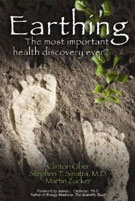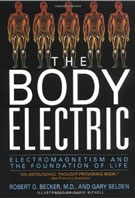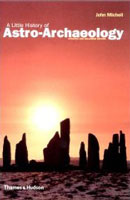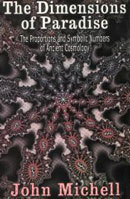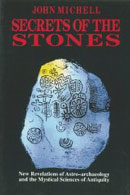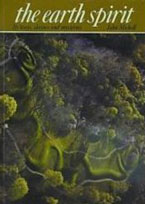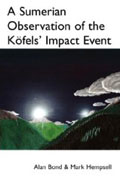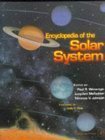|
News Headlines Digest
August 2012
“Chamber of secrets: Historic Scotland launches virtual tour of Maeshowe”
Current Archaeology (UK)
“Bulgarian archaeologist discover necropolis of ancient Apollonia in Sozopol”
Focus Information Agency (Bulgaria)
“Mass Sacrifice Found Near Aztec Temple”
National Geographic Daily News (USA)
“Excavation reveals ancient hair fashion”
Hurriyet Daily News (Turkey)
“Third 5,000-year-old figurine found at Orkney dig”
BBC News (UK)
“Plovdiv wants to expand Roman Forum dig after several finds”
Sofia Globe (Bulgaria)
“20 urns with skeletal remains found near Maski”
The Hindu (India)
“A group of amateur photographers who had climbed up a hillock near Maski in Lingsugur taluk of Raichur district last week were in for a big surprise.
They came across about 20 ancient urns with skeletal remains on the slopes of the hillock.
They learnt later that it was one of the ancient historic sites of Karnataka, many of which have been found in the past in Raichur, Gulbarga and Koppal belt.
What the photographers had come upon was an urn burial site dating back to the Megalithic or Iron Age, which had got exposed following continuous rain that had washed off the top soil.”
[Full Story]
“Prehistoric rock art found in caves on Terceira Island – Azores”
Portuguese American Journal (Portugal)
“Archaeologists in quest to unearth mysteries of past”
Denbighshire Free Press (Cymru)
“2,000-year-old tombs bear secrets of ancient Tibetan kingdom”
China.org (China)
“Rock art goes digital”
ABC Radio News (Australia)
“Bronze Age pottery sherd from Isles of Scilly could be earliest British depiction of a boat”
Culture24 (UK)
“Archaeologists investigate sea find of gilded bronze lion”
Gazzetta del Sud (Italy)
“Generation Gaps Suggest Ancient Human-Ape Split”
Science News (USA)
“Divers uncover evidence of Viking port”
UPI/The Local (Sweden)
“Research raises doubts about whether modern humans and Neanderthals interbred”
EurekAlert (USA)
“When did humans first use fire?”
ABC Science News (Australia)
“Dawn of Humanity Illuminated in Newly Released Research”
Popular Archaeolgy (USA)
“An entire army sacrificed in a bog”
Science Nordic (Denmark)
“Archaeologists have found skeletal remains of an entire army in an ancient mass grave in Denmark.
The bones confirm reports from written sources of shocking Teutonic massacres.
Archaeologists have spent all summer excavating a small sample of what has turned out to be a mass grave containing skeletal remains from more than 1,000 warriors, who were killed in battle some 2,000 years ago.
“We found a lot more human bones than we had expected”, says Ejvind Hertz, curator at Skanderborg Museum..
The discovery of the many Iron Age bones has attracted international attention, partly because the body parts are macabre per se, but also because the bones are surprisingly well preserved.
Furthermore, the find confirms a Roman source’s description of the Teutons’ atrocious war practices.
The site is located in the Alken Enge wetlands near Lake Mossø on the Jutland peninsula.”
[Full Story]
“Antiques to be salvaged from sunken Chinese ship”
TruthDive (USA)
“Children’s Graves Excavated in North Iceland”
Iceland Review (Iceland)
“Pigs and squatters threaten Peru’s Nazca lines”
Reuters (UK)
“Mystery of Russian Atlantis”
The Voice of Russia (Russia)
“Prehistoric Brain, Exceptionally Preserved, Found In Waterlogged Pit”
Huffington Post (USA)
“Amazing tattoos covered ancient Siberian princess”
News.com (Australia)
“Archaeological dig unearths rare Beddington find”
Surrey Comet (England)
“New excavations from Shuidonggou show initial appearance of the late Paleolithic in N. China”
PhysOrg (USA)
“Sculpture of Man and Horse at Isurumuniya”
Ceylon Daily News (Sri Lanka)
“Cambodia: Bathing children find ancient statues”
Sarasota Herald-Tribune (USA)
“Ancient mosque unearthed in Bangladesh”
Al-Jazeera (Qatar)
“Aryan settlements in the Urals: A precursor to Indian Civilisation?”
Russia & India Report (Russia)
“Earliest human evidence in Southeast Asia”
ABC Science News (Australia)
“Parts of a skull found in a cave in Laos are the earliest skeletal evidence for modern human occupation in Southeast Asia, report researchers.
The findings, made by an international team, are published today in the Proceedings of the National Academy of Sciences.
“Despite abundant limestone caves, there has been uncertainty about the arrival of modern humans in Southeast Asia because of a lack of dateable evidence”, says archaeologist Dr Kira Westaway from Macquarie University, who led the dating component of the project.
Archaeological and genetic evidence to date support the idea that modern humans rapidly migrated out of Africa and were present in extreme Southwest Asia by 90,000 years ago, and in Southeast Asia by 60,000 years ago.
But so far there has been little fossil evidence for early modern human occupation on mainland Southeast Asia, with the oldest evidence in the area being a skull found in Sarawak’s Niah Cave, dated at around 40,000 years.
The latest skull, has modern human features, including facial bones and teeth and has been found to be at least 46,000 years old.”
[Full Story]
“A new Archeopark opens with artifacts”
Hurriyet Daily News (Turkey)
“Sunken treasure”
Global Times (China)
“Polesworth Abbey dig uncovers 800 years of history”
Coventry Telegraph (England)
“Customs Officers at Bulgarian-Turkish Border Seize 2 kg of Antiquities”
Novinite (Bulgaria)
“Was Narmada valley the centre of human evolution?”
The Times of India (India)
“Sons of former Salafist MP arrested digging for monuments”
Ahram Online (Egypt)
“Dig unearths more about the lifestyle of medieval monks”
Morpeth Herald (England)
“Evolution of Humans in Europe More Complex Than Previously Thought”
Popular Archaeolgy (USA)
“Monastery where Christian saint was martyred is uncovered on Eigg”
The Scotsman (Scotland)
“Monmouth site is Bronze Age – archaeologist in row with minister”
South Wales Argus (Cymru)
“Evidence The Sophisticated Carpentry Developed Alongside Agriculture During Neolithic Period”
Red Orbit (USA)
“Archaeologists Find Thracian Town on Bulgarian Sea Coast”
Novinite (Bulgaria)
“Fossils point to a big family for human ancestors”
Nature (UK)
“Fossilized skulls show that at least three distinct species belonging to the genus Homo existed between 1.7 million and 2 million years ago, settling a long-standing debate in palaeoanthropology.
A study published this week in Nature1 focuses on Homo rudolfensis, a hominin with a relatively flat face, which was first identified from a single large skull in 1972.
Several other big-skulled fossils have been attributed to the species since then, but none has included both a face and a lower jaw.
This has been problematic: in palaeoanthropology, faces and jaws function like fingerprints for identifying a specimen as a particular species (which is indicated by the second word in a Linnaean title, such as ‘rudolfensis’), as opposed to the broader grouping of genus (the first word, as in ‘Homo’).
Without complete skulls, it has been difficult to reach a consensus on whether specimens attributed to H. rudolfensis are genuinely members of a distinct species, or actually belong to other Homo species that lived around the same time, such as Homo habilis or Homo erectus.
Understanding how many different Homo species there were, and whether they lived concurrently, would help to determine whether the history of the human lineage saw fierce competition between multiple hominins, or a steady succession from one species to another.”
[Full Story]
“Mass grave in London reveals how volcano caused global catastrophe”
The Observer (UK)
“Switzerland’s past faces an uncertain future”
Swiss Info (Switzerland)
“Lost Egyptian Pyramids Found?”
Discovery News (USA)
“Byzantine-Era Industrial Olive Press Found”
Arutz Sheva (Israel)
“A Roman shipwreck in the ancient port of Antibes”
Past Horizons (UK)
“Medieval silver treasure found on Gotland”
The Local (Sweden)
“Sails set for eternity”
Al-Ahram Weekly (Egypt)
“Pre-Columbian Cahokia Mound Builders Consumed “Black Drink”, Say Researchers”
Popular Archaeolgy (USA)
“Malindi archaeologists make new discoveries”
The Star (Kenya)
“Did a recently found bird spear belong to a kidnapped Greenlander?”
Science Nordic (Denmark)
“Syria’s ancient treasures pulverised”
The Independent (UK)
“Ancient ‘luxury villa’ found at Kourion”
Cyprus Mail (Cyprus)
“8,000 year old settlement in Romania provides evidence of first Neolithic farmers in the region”
Romania Insider (Romania)
“Archaeologists working on the route of the new Sibiu – Orastie highway in Romania have made what looks to be a once in a lifetime discovery of a Stone Age settlement.
The site, located in Sibiu county, is believed to be around 8,000 years old, but this, although remarkable in itself, is perhaps less exciting than the discovery that the people who lived in the settlement were Neolithic farmers using technology from the Near East.
If confirmed, the find will provide material evidence of the migration of people from Eastern Anatolia bringing farming to Europe.
The site has provided evidence of religion and ritual among these earliest of migrant to Romania’s territory.
The archeologists have found what they believe to be a cemetery and a shrine or sanctuary, which contained pottery with apparently ritual significance.”
[Full Story]
“Amluk-Dara stupa: Excavators discover unique complex”
The Express Tribune (Pakistan)
“The Origins of Modern Culture”
Democratic Underground (USA)
“Hanoi outlines master plan to preserve Thang Long Citadel”
SGGP (Viet Nam)
“Captain Morgan’s Treasure Discovered Near Panama By Captain Morgan-Funded Team”
Huffington Post (USA)
“Art Dealer Arrested, Accused of Smuggling Indian Antiquities”
INDOlink (India)
“Ancient Grave of Suspected Young Prince Found in Uxul, Mexico”
IB Times (UK)
“Roman aqueduct found under Zara store in Rome”
Wanted in Rome (Italy)
“Archeologists Uncover Maya Temple of the Blood Drinking Sun God”
io9 (UK)
“Stone seal may prove story of Samson”
Ministry of Foriegn Affairs (Israel)
“Test flight over Peru ruins could revolutionize archaeological mapping”
PhysOrg (USA)
“Iron Age graves discovered in northern Iran”
Tehran Tims (Iran)
“The story of the discovery of the bronze age boat”
This is Kent (England)
“Priceless Egyptian antiquities seized at Laredo, TX border crossing”
Government Security News (USA)
“The Antikythera Mechanism Research Project”
Cardiff/Athens Universites (Cymru/Greece)
[In October 1900, Captain Dimitrious Kondos was leading a team of sponge divers near the the island of Antikythera off the coast of Greece. They noticed a shipwreck about 180 feet below the surface and began to investigate. Amongst the artifacts that they brought up was a coral-encrusted piece of metal that later archaeologists found was some sort of gear wheel.
The rest of the artifacts, along with the shape of the boat, suggested a date around 2000 years ago, which made the find one of the most anomalous that had ever been recovered from the Greek seas. It became known as The Antikythera Mechanism.
In 2006 the journal “Nature” published a letter, and another paper about the mechanism was published in 2008, detailing the findings of Prof. Mike G. Edmunds of Cardiff University. Using high-resolution X-ray tomography to study the fragments of the anomalous Antikythera Mechanism, they found that it was in fact a bronze mechanical analog computer that could be used to calculate the astronomical positions and various cycles of the Moon – as seen from the Earth: – Ed]
Part of the Antikythera Mechanism
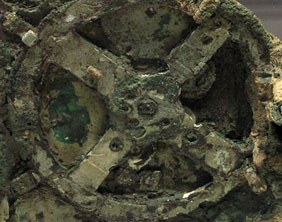
Copyright © 2006
Antikythera Mechanism Research Project
“Antikythera Mechanism – World’s earliest existing analogue computer”
HotnHit News (India)
“Decoding an Ancient Computer: Greek Technology Tracked the Heavens”
Scientific American (USA)
“Watch a video explaining the Antikythera mechanism”
Nature (UK)
“World’s First Computer Rebuilt, Rebooted After 2,000 Years”
Wired Gadget Lab (USA)
“Antikythera: A 2,000-year-old Greek computer comes back to life”
The Guardian Science Blog (UK)
Google image search results for The Antikythera mechanism
Google (USA)
|



